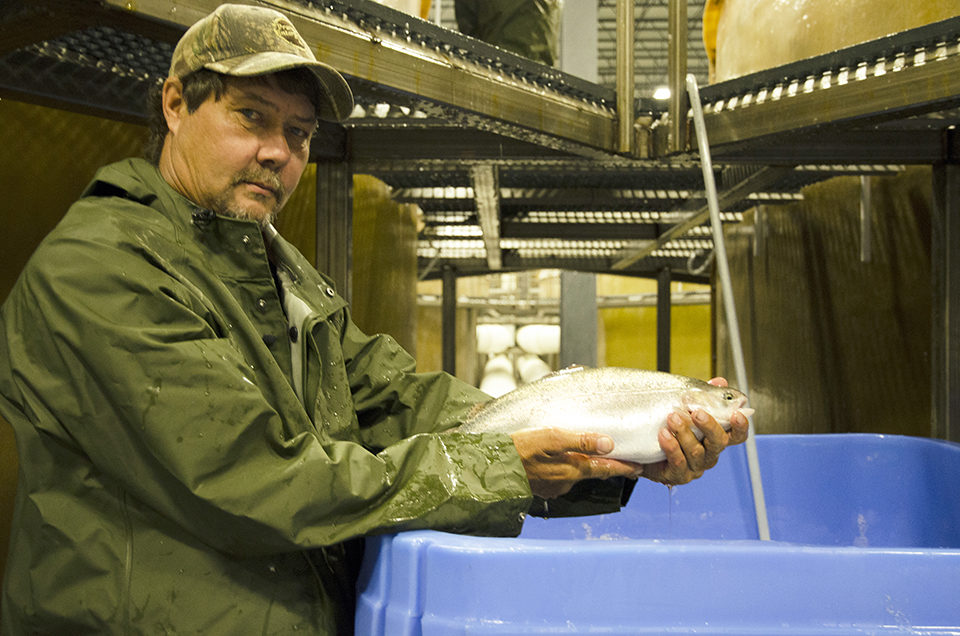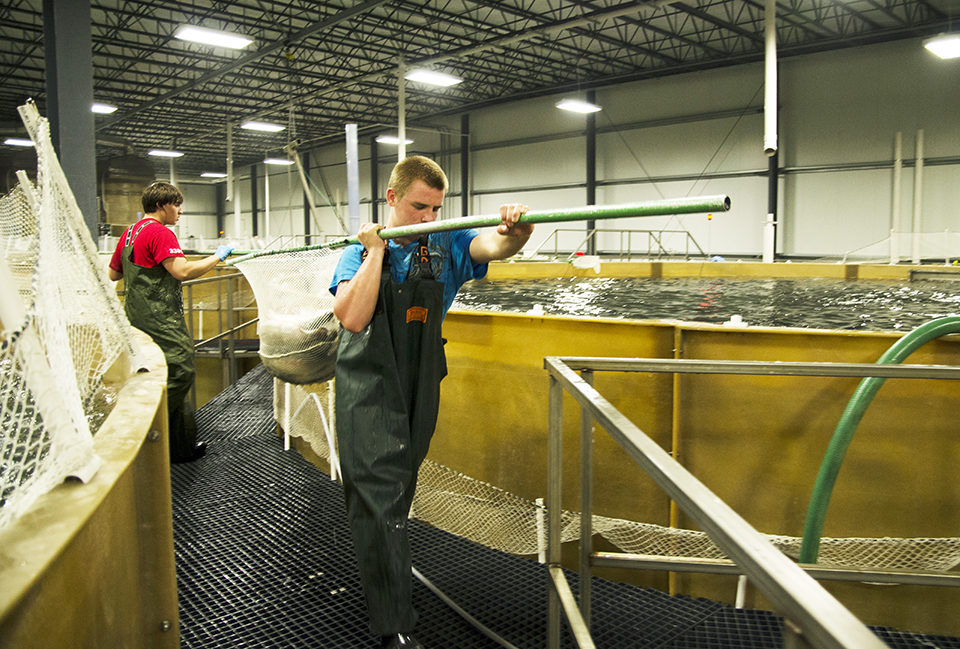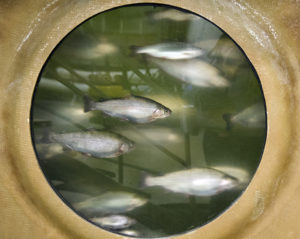Educate the public by promoting a good image of fish farms

The goals of product marketing are the same, no matter what the product is, no matter what the market. Understand your market, familiarize yourself with what motivates your audience, get them to desire what you have and push them to make a decision to purchase it.
However, the author, who has an extensive background in consumer electronics design, branding and marketing, encountered a number of hurdles involved in marketing farmed fish that weren’t so common in the field of electronics. Based on experiences in the United States over the past year, she offers perspectives on some of the problems faced by aquaculture.
Are fish farms bad?
For a number of reasons, the words “farm” and “fish” do not work well together in the human brain. This can be attributed to a couple of factors: We do not typically think of fish as being produced on a farm, and bad public relations for a few fish farms have tainted the entire industry.
As an illustration, an attendee came up to the author’s booth at a recent seafood show, tried a sample of smoked steelhead and exclaimed: “This is farmed? It’s so good!” This seemed to communicate that a preconceived notion in this person’s mind said farmed fish cannot taste good – which makes absolutely no sense, especially considering so much of our seafood comes from farms. The image in her mind of a fish farm likely did not represent an environment conducive to producing high-quality, flavorful food.
Bell Aquaculture’s Chief Executive Officer Norman McCowan has said: “When was the last time you caught and ate a wild cow? How about a wild pig? A wild chicken?” This is a very valid point.
We farm all of these animals for food production and don’t think it’s strange at all. Aside from the fact that fish are aquatic, and cows, pigs and chickens are land-based animals, what does it matter? It seems that merely getting people used to the idea that fish can be farmed would contribute greatly to overcoming this roadblock in people’s minds.
Perception vs. reality
Human beings fear what they don’t know. Good fish farms aren’t typically featured in the mainstream media. Bell’s approach to getting people past their fish-farming issues is to be completely transparent. The company gives over 250 tours a year of its state-of-the-art recirculating aquaculture system to show people what a properly run indoor fish farm is like. Being as transparent as possible and practicing responsible aquaculture across the entire industry give consumers comfort and confidence.
Because of public perception, some in the aquaculture industry have developed an aversion to being labeled a fish farm. Well, this issue is not going to go away, and it is better to address it head on than to steer clear of it and wait for the public to decide what fits with the term “farm.”
Wouldn’t it be better if consumers knew that the good and bad practices found in fish farming have parallels in every other protein industry? Thank goodness for programs like Best Aquaculture Practices certification and the Aquaculture Stewardship Council, for providing some level of comfort to consumers through verification of best practices in fish and shellfish farming.
We also need to embrace the term “farmed fish” and make it positive and preferable to “wild fish” in the minds of consumers. Or at least competitive in the areas of quality, taste and price. To do so, we should associate “farm” and “fish” with positive images, and use branding and marketing efforts that combine those concepts into something positive consumers can digest (no pun intended).
Chemicals, contaminants
Aquaculture has been hurt by the good, the bad and the ugly of fish farming. Articles come out every day telling people not to eat farmed fish due to contaminants, hormones, antibiotics or uncleanliness. A recent one said farmed fish is the No. 1 cause of cancer in food. Since this will probably continue to happen, we must continue to fight back and publicize the other side of the story.

Fishing is sexy
Have you seen the television show “Deadliest Catch”? In Seattle, the crew from the boat featured in the program has carved “Deadliest Catch eats here” into the wall of a local fish and chips shop. They are cool.
Fish farming is not at all like “Deadliest Catch.” There are no huge waves crashing around as you drag your net in. Although much less dramatic than fishing on the high seas, aquaculture is a science and an art. It takes patience, exceptional dedication and the work of numbers of people pulling together to get that fish from egg to market.
Good food revolution

We have entered a new age in food. Will Allen of Growing Power coined the phrase “The Good Food Revolution.” Words like organic, local, hormone-free, antibiotic-free, contaminant-free, gluten-free and dairy-free are now on the labels of food items we see every day.
We are relearning how to produce healthy food for humans in an efficient way. The aquaculture industry can capitalize on this. Fish farming is the new way to produce healthy protein – a necessary part of the human diet. We have to make consumers understand and appreciate what we do.
We are farmers
Engineers, scientists, caretakers and artists – all play a role in farmed seafood production and marketing. We work to create the ideal culture environments so there is no risk to the important role seafood plays in human health. We feed and nurture our fish from tiny eggs to market size. We are farmers, and we are growing the protein source of the future.
We need to promote good aquaculture, however. Since most farmers are busy farming and do not have the funds for extravagant marketing campaigns, this is not an easy task to take on, but we can do it if we work together. As this industry grows further, let us strive to cooperate in educating the public by promoting the image of good fish farms and the high-quality products they produce.
(Editor’s Note: This article was originally published in the November/December 2014 print edition of the Global Aquaculture Advocate.)
Author
-
Rebecca Priebe
Bell Aquaculture
9885 Indiana 67
Redkey, Indiana 47373 USA
Related Posts

Intelligence
A motive, and a market, for farmed fish in Mexico
Boasting ample areas for aquaculture and a robust domestic demand for seafood – not to mention its close proximity to the U.S. market – a land of opportunity lies in Mexico. Fish farming is primed to meet its potential south of the border.

Responsibility
A look at various intensive shrimp farming systems in Asia
The impact of diseases led some Asian shrimp farming countries to develop biofloc and recirculation aquaculture system (RAS) production technologies. Treating incoming water for culture operations and wastewater treatment are biosecurity measures for disease prevention and control.

Intelligence
Adding flavor complexity to farmed barramundi
Organoleptic attributes such as flavor and aroma are among the most important factors that influence consumer acceptability and demand for fish products. Consumers have identified farmed fish as less complex and lacking “sealike” or “sea-fresh” flavors and aromas.

Responsibility
An African prison where fish will be farmed and lives saved
A nonprofit organization working to improve conditions in African prisons is hoping tilapia ponds, tended to by inmates, will aid in their nutrition. A small donation from the Global Aquaculture Alliance will go a long way.


